EVOLUTION
| Four billion years of evolution in six minutes 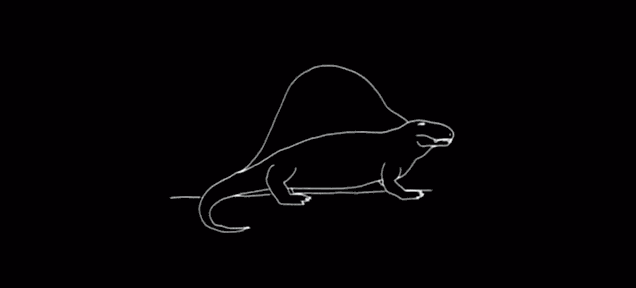
The Evolution of Birds: Masters of the Sky and Beyond Birds are among the most successful and diverse groups of animals on Earth, with their roots tracing back over 150 million years to small feathered dinosaurs like Archaeopteryx. Since then, natural selection has sculpted birds into an astonishing array of forms, behaviors, and adaptations, allowing them to conquer virtually every ecosystem on the planet—from icy tundras to dense tropical rainforests. Woodpeckers are a perfect example of avian specialization. With reinforced skulls, shock-absorbing tissue, and a long, sticky tongue that wraps around the skull when not in use, they have evolved to chisel into bark in search of insects. In stark contrast, hummingbirds are aerial acrobats that hover with breathtaking precision, powered by rapid wingbeats and a high-octane metabolism to sip nectar—an energy source few other birds can exploit. Then there are the raptors—eagles—built for power and precision. Their eyesight is among the sharpest in the animal kingdom, and their talons can crush with deadly force. Meanwhile, parrots combine intelligence with dexterity, using their curved beaks and agile feet to manipulate objects and crack tough nuts—traits that also make them some of the best problem-solvers among birds. 
Waterfowl like swans, egrets, and ducks offer yet another window into evolutionary brilliance. Swans glide with elegance but are fiercely territorial during breeding season. Egrets, with their long legs and dagger-like beaks, stalk fish with monk-like patience. The brilliantly colored mandarin ducks and their cousins the mallards and wood ducks showcase sexual selection at work: males of these species sport vivid plumage to attract mates, often participating in elaborate courtship displays. And then there are the thinkers—crows and gulls. Crows have demonstrated the ability to use tools, recognize faces, and even plan for the future. Gulls, often underestimated, are resourceful urban survivors, capable of learning new foraging techniques by watching one another—an impressive show of social learning. From jungle canopies to city skylines, birds reflect the evolutionary interplay of form, function, and environment. Their incredible variety isn’t just beautiful—it’s a living story of adaptation and survival across time.
Natural selection in a hurricane: The lizards that won't let go
| |
World-renowned evolutionary biologist and author, Dr. Jerry Coyne, answers some common questions and misconceptions regarding evolution for Now That's Wild.
What is Natural Selection? ❯Natural selection describes what happens when carriers of some genes leave more offspring than others. The genes that enhance reproduction, often by making an animal or plant more adapted to the environment, thus come to predominate in populations. For example, the ancestor of the polar bear was brown, but when it came to occupy snowy areas, genes for white color were favored, as they camouflaged the bears from their prey, giving white bears a greater ability to get food—and hence leave more offspring than did brown bears. Over time, this form of natural selection genetically transformed the color of the species from brown to white. All that is required for natural selection is that there is variation among the forms of genes (i.e., different “alleles,” like those producing brown versus blue eyes in humans, or our different blood types), and that some genes promote enhanced reproduction of their carriers than do alternative forms of those genes. The variant forms of genes arise by the process of mutation, which is “random” in the sense that errors in the genetic material occur regardless of whether they are useful. But then a deterministic process—natural selection—takes over and winnows out the bad variants, preserving the good. In general, this kind of change improves the adaptation of organisms to their environment, explaining why plants and animals are remarkably suited to their habitat. Natural selection is often called “survival of the fittest”, but this is a misnomer in two ways. First, what is important is reproduction: carriers of some genes leave more copies of those genes, in their offspring, than do carriers of others. Survival is important only if it leads to greater reproduction. (Genes that kill organisms after they’ve stopped reproducing are not detrimental.) Second, natural selection does not produce absolute perfection, but only individuals better adapted than those of previous generations. Mutations making an animal perfectly adapted to its environment may simply not be possible. (If perfection were possible, species would not go extinct, for they’d be able to withstand any assault by the environment.) Thus, a better characterization of natural selection would be “reproduction of the fitter.” Finally, although natural selection is often described as a “force” or “agent” acting on organisms, that’s just shorthand for what is really happening: not some external force changing a species directly, but simply a process of differential sorting of genes that often depends on the environment in which those genes are expressed.
What is Species and Speciation? ❯One of the most obvious observations about nature is that it is divided into discrete units. When we look at a bird, for instance, we can immediately identify it as a cardinal, a sparrow, a pigeon, a starling, and so on. These groups are not arbitrary, so that birds do not form an avian continuum in which individuals blur together insensibly. And so it is with nearly every group of animals and plants. These objectively distinct groups are called “species.” To evolutionary biologists, a “species” consists of a group of organisms that can mate and produce offspring with each other, but are separated from members of other species by “reproductive isolating barriers”: those biological features that prevent different species from producing fertile offspring. The barriers are diverse, including those factors that adapt species to different environments, so that they never meet (e.g., polar bears vs. brown bears); those factors that affect the likelihood of mating, so that members of different species either attain reproductive condition at different times (e.g., different coral species) or simply do not find each other acceptable as mates (e.g., many insect species); and those factors that impair the viability or fertility of hybrids (e.g., the sterile mule, a hybrid between a donkey and a horse). All of these factors prevent genes from moving between different species and thus keep the spcies distinct. The process of “speciation” occurs when one ancestral species branches into two or more reproductively isolated species. This usually occurs when a single species has populations that are separated by geographic barriers like oceans or mountain ranges. By preventing mating between populations of a species, these geographic barriers allow the populations to evolve independently, along different genetic pathways. If these pathways diverge to such an extent that the populations have evolved nearly complete reproductive barriers, then speciation has occurred. In other words, the geographic barriers, by allowing independent evolution, promote the evolution of the reproductive barriers. This process of repeated branching of lineages explains the “tree of life”: how, starting with one ancestral species about 3.7 billion years ago, we now have millions of branches: the living and extinct species.
What is meant by Sexual Selection? ❯Sexual selection is a subset of natural selection based not on adapting organisms to their environment, but on adapting each sex to the mating preferences of the other. If females have preferences for certain characteristics of males (in animals, it’s almost always females who choose males rather than the other way round), then males with those characteristics will leave more offspring than males without them, and so the population will evolve males with the attractive traits. In peacocks, for example, females prefer males with showier tail feathers and more “eyespots” on their feathers. Over time, this led to the evolution of males with the long, extravagant, and beautiful tails we so admire. But this process can actually reduce the survival of males: male peacocks, weighted down by those tails, are not as good at flying or escaping predators as peacocks with shorter tails. But what is important in natural selection is reproduction, not just survival, and the mating advantage of long-tailed males more than compensates for their survival disadvantage. Two other points. First, sexual selection, first proposed by Darwin in 1871, is the explanation for why, if one sex is showier than the other, or has brighter colors, louder calls, or fancier plumage, that sex is almost invariably the males. Many experiments have supported this idea. Second some mysteries remain: why do female peacocks, for example, prefer longer tails in males, and female house finches brighter colors in males? In some cases, as in the armaments of males like the longer tusks of male elephants, the larger body size of elephant seals, or the big jaws of stag beetles, we do have the answer: males need these weapons to fight for females. But an explanation for traits like bright male color or long male plumage still eludes us, and scientists are working on these problems now.
What is meant when people refer to a "missing link"? ❯Opponents of evolution often say that we have no “missing links” between species showing that they had a common ancestor, so that evolution could not have occurred. But this claim isn’t really true. A “missing” link between two groups would represent a single fossil species that itself was the ancestor of two existing groups (i.e., of modern humans and modern chimpanzees); and finding a single species in the fossil record is very difficult: far less than 1% of all species that ever lived are known as fossils. But you can demonstrate common ancestry in an easier way: the existence of “transitional forms” that are on the line between a common ancestor and their modern descendants. So, if we go back in time through the fossils, we should find species resembling the common ancestor more and more. And indeed, we have many examples of such transitional forms: early birds that resemble their theropod dinosaur ancestors, but with feathers. We have early horses that have four toes, which gradually disappear as horses fossils come closer and closer in time to the present day. Likewise, we have transitional forms between fish and amphibians, between amphibians and reptiles, between reptiles and mammals, and between modern humans and their more apelike ancestors. There are hundreds of these examples, decisively proving the idea of common ancestry. Further, the transitional forms occur in the right time in the fossil record. Feathered dinosaurs, for instance, are found about 150 million years ago, after the theropod ancestors already lived but before we see fossils of modern birds.
What is the relationship between time and evolution? ❯If you squeezed the 3.5-billion- year history of life into just a single minute, multicellular life would appear only after 50 seconds, the invasion of land by vertebrates after 54 seconds, modern angiosperms (flowering plants) after 58 seconds, and just in the last 0.04 seconds would modern humans (Homo sapiens) take the stage. Evolution by natural selection is a very slow process—taking thousands or millions of years—especially when it produces complex traits like animal metabolism and brains. We humans don’t appreciate the long time period over which evolution has occurred because, being on earth only for a few decades, we’re used to thinking in spans of less than a century.
What is your response to someone who says evolution is "just" a theory? ❯Most people think of a “theory” as “a mere guess or speculation,” like “It’s my theory that Shirley will get a promotion at work this week.” But that’s not the way that scientists use the word. In science, a “theory” is a coherent explanation for a diverse set of observations, an explanation that accounts for all the observations. For instance, we still refer to the “theory of gravity” or “the atomic theory” or “the germ theory of disease,” yet each of these are well supported explanations for why objects fall the way they do, why matter behaves in certain ways, and why infectious disease involves viruses, protozoans, and bacteria. Although evolution is often dismissed as “only a theory,” it is in fact as well supported as are the “theories” of gravity, atoms, and disease-causing microbes. (Nobody doubts, for instance, that smallpox is caused by a virus or that the formula for water is H 2 O.) There are literally thousands of observations that support evolution, and no observations that refute it. (There could have been such observations: for example, the discovery of mammalian fossils in 400- million-year old layers of the fossil record. But this kind of data simply hasn’t been seen.) And the observations that support evolution come from diverse areas of science: paleontology, embryology, morphology, the fossil record, molecular biology, biogeography, and so on. This gives us strong confidence that evolution is true. Although no scientific theory can ever be proven correct—it’s always possible that some remarkable observations that haven’t yet been made could disprove evolution—evolution is about as certain to be true as any theory can be. The fact that, after 150 years, no observations have disproven it gives us confidence that the theory of evolution really is true. You could confidently bet your life savings on that!
Are all species related? ❯The answer is a firm “yes”! Molecular data show unequivocally that all living species descended from a single species, called the “Last Universal Common Ancestor” that probably lived about 3.8 billion years ago. That single species then branched again and again, giving rise to not only the millions of species living today, but to the millions of species that went extinct without leaving descendants. The relatedness of all species is shown not only through similarities and differences in their DNA, but in the retention of ancestral traits in some descendants, like the muscles that enable some humans to wiggle their ears: a nonfunctional remnant of the muscles that moved the ears of our mammalian ancestors in an adaptive way—to localize sound. We still share genes with many of our distant relatives, like bacteria, flies, worms, and even with the cotton plant that produced your shirts.
What about human evolution? ❯The story of human evolution began in Africa about six million years ago and involves the many changes in our bodies, brains, and physiology that our ancestors experienced on their way to modern humans. We’re not the endproduct of our lineage, of course, for Homo sapiens, like all species, continues to evolve. Both fossil and molecular evidence show that our common ancestor with our closest relatives (the two species of chimpanzees) lived 6-7 million years ago. We diverged from our next closest relative, the gorilla, via a common ancestor that lived about 9 million years ago. In the past six million years, at least a dozen different species of “hominins” evolved —those species that sprouted from “our” branch that diverged from chimps—with perhaps three or four of them living at the same time, and perhaps in the same place! (Neandertals and “modern” humans are two of these; and some of them actually interbred.) Imagine these members of different human-like species encountering each other for the first time! Many of these species simply went extinct without leaving descendants, while others continued on the lineage that gave rise to us. We’re still not clear about the precise species on that lineage, but paleontologists and molecular biologists are constantly revising and clarifying the story of human evolution.
A final word on Charles Darwin ❯Born in 1809, Charles Darwin was only 22 years old when was named the companion of the captain of the HMS Beagle, a ship appointed by the British government to survey the coast of South America. It turned out that the voyage lasted five years, giving Darwin, an amateur naturalist, a chance to observe and collect plant, animal, and rock specimens from around the world. After the Beagle returned to England in 1836, Darwin began pondering all these observations, and slowly realized that organisms were not created all at once and had been unchanged ever since—the “creationist” view of virtually all scientists of the time—but had evolved gradually over millions of years. Scrutinizing his data also led him to see that organisms hadn’t just changed over time, but that their lineages had split repeatedly, leading to the appearance of new species and to the branching bush of life. This, in turn, implied that all species had common ancestors. Finally, after pondering the remarkable ability of humans to create new varieties of plants and animals by controlled breeding (“artificial selection”), Darwin hit on his most novel idea: natural selection—the process explaining the remarkable adaptations of plants and animals to their environments. (See “What is natural selection?”) The development of Darwin’s theory was very slow, for he worked it out over decades not only through careful thinking, but through corresponding with hundreds of people around the world and discussing his ideas with his colleagues. Finally, in 1859, he put it all together in a single world-changing book: On the Origin of Species by Means of Natural Selection, usually called simply The Origin. His ideas and the data he gave supporting them were so convincing that within a decade virtually every thinking person in Europe and the United States accepted evolution as true.The concepts of evolution and natural selection have been called “the best ideas anybody ever had”, for they not only changed our view of nature, but also of our own place in nature and our evolutionary origin from earlier species and relatedness to all living species. Scientific work since 1859 has shown Darwin’s major ideas to be correct, and so, in this single book, he laid out the true story of not just human origins, but the origins of every creature, living and extinct. No other biologist has ever changed our understanding of nature as much as Darwin. That is why he’s considered a hero to many scientists. Here is the stirring last paragraph of The Origin: “Thus, from the war of nature, from famine and death, the most exalted object which we are capable of conceiving, namely, the production of the higher animals, directly follows. There is grandeur in this view of life, with its several powers, having been originally breathed into a few forms or into one; and that, whilst this planet has gone cycling on according to the fixed law of gravity, from so simple a beginning endless forms most beautiful and most wonderful have been, and are being, evolved.”
Dr. Jerry Coyne is professor of evolutionary biology at the University of Chicago in the Department of Ecology and Evolution specializing in evolutionary genetics and the origin of species. He is the author of the book and blog, Why Evolution is True and is a highly regarded scientist in the study of evolution. 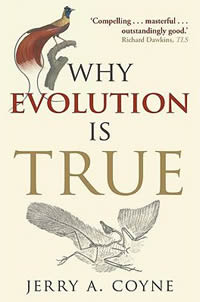
|
|
| What is the Evidence for Evolution?
Support Stated Clearly on Patreon
| |
| Tracking the First Animals on Earth
Zoologist Matthew Cobb from the University of Manchester, UK, talks about the early evolution of the animal kingdom on the BBC podcast:
| |
Snakes, Spiders and Evolution (Oh My!) In the field of evolutionary psychology, the thought is that instinctive fears become hard-wired in our biology through genes or other inheritance. A new study suggests that the fear of spiders and snakes has been shaped by evolution, stretching back to a time when early man slept on the ground or in caves and had to survive in an environment dominated by arthropods and reptiles. In the field of evolutionary psychology, the thought is that instinctive fears become hard-wired in our biology through genes or other inheritance. A new study suggests that the fear of spiders and snakes has been shaped by evolution, stretching back to a time when early man slept on the ground or in caves and had to survive in an environment dominated by arthropods and reptiles.Certain stimuli are pre-wired in the brain because they have been perennially dangerous to our ancestors. Although some of us fear snakes more than others, baby humans, chimps and monkeys are equally jumpy when confronted with a black plastic snake. That aversion probably grew out of pressures of life in the jungles and savannas of Africa eons ago. Back then, encounters with poisonous snakes or spiders were a matter of life or death, and a healthy fear of snakes helped our ancestors live long enough to procreate. |
|
| Earth's Entire History On A Football Field | |
Ginkgo: A Living Fossil The Ginkgo tree is a living fossil. The speed and direction of evolutionary change can vary in a species, allowing some to remain relatively unchanged for long periods of time. Newly found specimens of Ginkgo grew more than a hundred million years ago and are remarkably similar to present-day trees. There are some specimens of Ginkgo in a Chinese monastery garden that are over three thousand years old. Previous fossils have revealed the Ginkgo tree has remained unchanged for over 51 million years, and similar trees were alive and well 170 million years ago, during the Jurassic period. Although there are subtle differences in specimens from the Jurassic period, there is little doubt that this tree is a descendant of forebears that provided food for dinosaurs. The Ginkgo tree is a living fossil. The speed and direction of evolutionary change can vary in a species, allowing some to remain relatively unchanged for long periods of time. Newly found specimens of Ginkgo grew more than a hundred million years ago and are remarkably similar to present-day trees. There are some specimens of Ginkgo in a Chinese monastery garden that are over three thousand years old. Previous fossils have revealed the Ginkgo tree has remained unchanged for over 51 million years, and similar trees were alive and well 170 million years ago, during the Jurassic period. Although there are subtle differences in specimens from the Jurassic period, there is little doubt that this tree is a descendant of forebears that provided food for dinosaurs. |
|
| The Life of Alfred Russel Wallace |
|
Bugs. Creepy crawlies. Beasties. Those little critters with exoskeletons- otherwise known as arthropods. The group that includes insects, like bumblebees and cockroaches, arachnids, like spiders and scorpions, and myriapods, like centipedes and millipedes. Most bugs are little. Even the ones we think of as being big, like tarantulas or luna moths, are pretty little compared to us and most animals. So if you’re a bug, one thing you have to worry about is that there are probably big animals out there who want to catch you and eat you for lunch. To address this problem several bugs have evolved a lot of really clever ways to stay safe from all those big, hungry animals. Some bugs can run really fast, some are camouflaged, and some have painful stingers. And then there are bugs that have truly unique forms of self-defense. One bug that has evolved a distinctive way of protecting itself is a vinegaroon, or whip scorpion. Vinegaroons are arachnids, which means they have eight legs, two body parts and no antennae. They look quite similar to true scorpions, except they’re missing the thick tail with the stinger at the end, and they’re missing the scorpion’s venom that’s in that stinger. Instead, vinegaroons have a flagellum (a thin whip-like appendage – but from this point on we’ll just call it a tail) that they use as a feeler because they don’t have very good eyesight.
Now, you may think of vinegar as a tasty ingredient in Italian salad dressing and dill pickles. But in the wild, animals don’t eat salad dressing or dill pickles, and when an animal gets a spray of vinegar in its face, it doesn’t like it very much. It doesn’t like the smell, it doesn’t like the taste, and it doesn’t like the burning that results if the acid gets in its eyes. And if the predator is another arthropod, it doesn’t like the feel of the acid seeping through its exoskeleton. So it may just decide to leave the vinegaroon alone and go in search of more appetizing prey. That little spray of acetic acid is a very effective evolved deterrent against danger. So if you’re ever walking around on a summer night in the southwest United States or Mexico and come across a vinegaroon, and you suddenly smell vinegar, you’ll know the critter isn’t happy about meeting you. But, don’t take it personally. To the vinegaroon, you’re just another huge, hungry animal. by Sarah Rollin Naughton |
|
| Great Transitions: The Origin of Humans
|
|
|
Video written by Nicole Reggia, Produced by Dave Bock, Now That's Wild.com - The evolution of the horse occurred over a period of 50 million years, transforming the small, dog-sized, forest dwelling Eohippus into the modern horse. |
|
|
Charles Darwin
In October 1831, the 90-foot vessel named the HMS Beagle set sail for a 5 year voyage around the world that would inspire a young Charles Darwin to transform his thinking into developing his ideas of evolution to explain biological change. Darwin's exposure to specimens all over the globe led him to believe that they had gradually evolved from common ancestors. The concept of evolution means that species change over time and that over long, and sometimes short, periods generations of plants and animals can look very different due to genetic changes. Perhaps no one has influenced our knowledge of life on Earth as much as this English naturalist because his ideas about evolution by natural selection made us rethink our place in the world and united us with all life on our planet. "from so simple a beginning endless forms most beautiful and most wonderful have been and are being evolved" |
|
| Frequently Asked Questions About Evolution | |
|---|---|
Isn’t evolution just a theory?
|
|
Are all species related?
|
|
Is there a “missing link”?
|
|
What is natural selection?
|
|
Does sex play a role in evolution?
|
|
What is speciation?
|
|
What is the relationship between time and evolution?
|
|

Why is it important to teach evolution?Understanding evolution is critical for understanding biology. As the preeminent scientist Theodosius Dobzhansky stated, “Nothing in biology makes sense except in the light of evolution.” Evolution is the only scientific explanation for the diversity of life. It explains the striking similarities among vastly different forms of life, the changes that occur within populations, and the development of new life forms. Excluding evolution from the science curricula or compromising its treatment deprives students of this fundamental and unifying scientific concept to explain the natural world. Teaching and learning about evolution has immense practical value that extends beyond understanding our world. The principles of evolution underlie improvements in crops, livestock, and farming methods. Natural selection accounts for the rise in pesticide resistance among agricultural pests and informs the design of new technologies to protect crops from insects and disease. Scientists are applying lessons from evolutionary biology to environmental conservation: plants and bacteria adapted to polluted environments are being used to replenish lost vegetation and to clean up toxic environments. Species from microbes to mammals adapt to climate change; studying the mechanism and rate of these changes can help conservation experts formulate appropriate measures to protect species facing extinction. Understanding evolution is also central to the advancement of medicine. Indeed, the entire field of “evolutionary medicine” is devoted to using the principles of evolution to study and treat human illness and disease. Concepts such as adaptation and mutation inform therapies and strategies to combat pathogens, including influenza. Models developed by evolutionary biologists have shed light on genetic variation that may account for an increased risk of Alzheimer’s and coronary heart disease. Knowing the evolutionary relationships among species allows scientists to choose appropriate organisms for the study of diseases, such as HIV. Scientists are even using the principles of natural selection to identify new drugs for detecting and treating diseases such as cancer. Studying evolution is an excellent way for students to learn about the process of scientific inquiry. Evolution offers countless and diverse examples of the ways scientists gather and analyze information, test competing hypotheses, and ultimately come to a consensus about explanations for natural phenomena. Understanding science is essential for making informed decisions and has become increasingly important for innovation and competitiveness in the 21st century workplace. It is critical, therefore, that students receive a sound science education including evolution. Removing evolution from the science classroom or allowing it to be compromised not only deprives students of a fundamental tenet of biology and medicine, but it will undermine their understanding of how scientific knowledge is amassed. |
|
| Back to Top |  A curious aspect of the theory of evolution is that everybody thinks he understands it. -Jacques Monod |

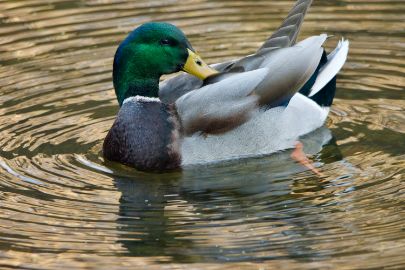







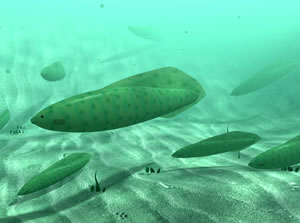
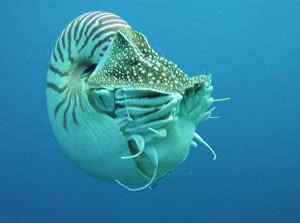
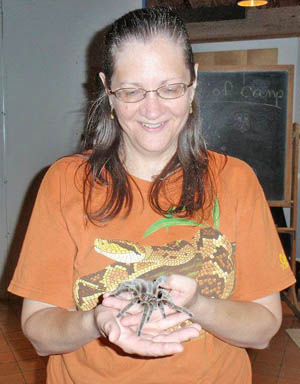 Is That Salad Dressing I Smell?
Is That Salad Dressing I Smell?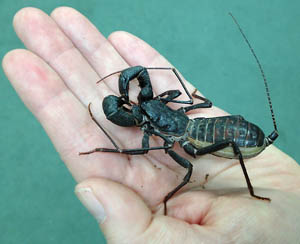 Vinegaroons have a gland in their abdomens that produces a solution that is mainly acetic acid. Acetic acid is the same acid that’s in vinegar. That’s right – vinegar. When a vinegaroon feels alarmed or threatened by the presence of a predator, it secretes some of this solution from the base of its tail.
Vinegaroons have a gland in their abdomens that produces a solution that is mainly acetic acid. Acetic acid is the same acid that’s in vinegar. That’s right – vinegar. When a vinegaroon feels alarmed or threatened by the presence of a predator, it secretes some of this solution from the base of its tail. 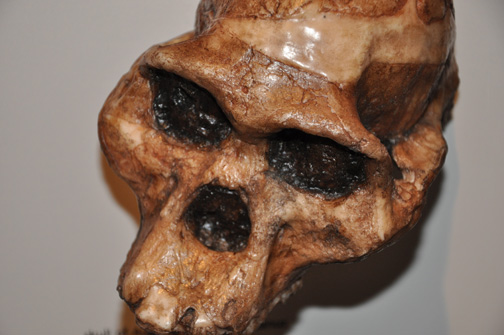
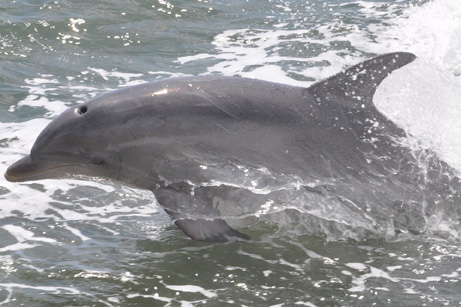 Decoding Dolphins
Decoding Dolphins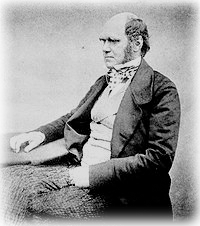
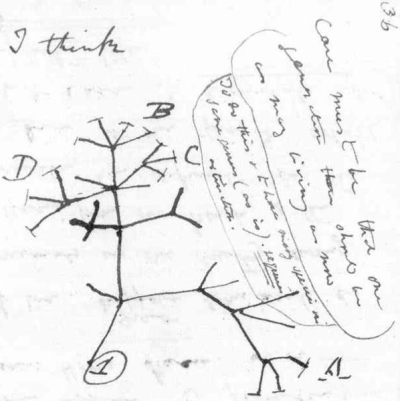
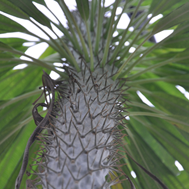 Yes. All organisms, both living and extinct, are related. In the tree of life, every branch represents a species and every fork separating one species from another represents the common ancestor shared by these species. Scientists are able to sequence DNA and fossils and find descendants joining their ancestors. DNA analyses show that although humans share far more genetic material with our fellow primates, we still have more than 200 genes in common with bacteria. You share genes with yeast, flies, worms, mice and with the cotton fibers in the shirt you’re wearing.
Yes. All organisms, both living and extinct, are related. In the tree of life, every branch represents a species and every fork separating one species from another represents the common ancestor shared by these species. Scientists are able to sequence DNA and fossils and find descendants joining their ancestors. DNA analyses show that although humans share far more genetic material with our fellow primates, we still have more than 200 genes in common with bacteria. You share genes with yeast, flies, worms, mice and with the cotton fibers in the shirt you’re wearing.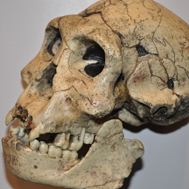 The idea of a "missing link" is a misconception because nothing is actually "missing". There are many, many transitional forms that have been found between all kinds of distinct taxonomical groups, including in our ancestral line. The news is filled almost daily with new discoveries that show the transitions and adaptations of species. There are many well preserved fossils that show the transitions of things like scales to feathers and toes to hooves and they are on display in museums for everyone to see and study. DNA sequencing has provided further evidence with adaptations occurring at the right time in the geographical record to support these transitions. Several discoveries within our own human lineage fulfilled the predictions that humans share a common ancestor with modern African apes, like the gorillas and chimpanzees.
The idea of a "missing link" is a misconception because nothing is actually "missing". There are many, many transitional forms that have been found between all kinds of distinct taxonomical groups, including in our ancestral line. The news is filled almost daily with new discoveries that show the transitions and adaptations of species. There are many well preserved fossils that show the transitions of things like scales to feathers and toes to hooves and they are on display in museums for everyone to see and study. DNA sequencing has provided further evidence with adaptations occurring at the right time in the geographical record to support these transitions. Several discoveries within our own human lineage fulfilled the predictions that humans share a common ancestor with modern African apes, like the gorillas and chimpanzees.
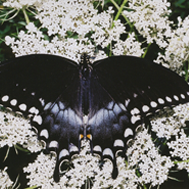 Natural selection is the process by which species adapt to their environment and form a new, separate species. It leads to evolutionary change when individuals with certain characteristics have a greater survival or reproduction rate than other individuals in a population and pass these inheritable genetic characteristics to their offspring. The idea of "survival of the fittest" is a misconception. It is more like "survival of the fittest for the times" and even then the so called "fittest" may not be the one to survive. Many things like disease, climate, geography, resources and predation can all determine what traits get passed on to future generations. It is important to remember that natural selection does not produce a straight line to perfection which is evident because most of life that existed on Earth is extinct. Natural selection can take a long time and can only make improvements on the existing models of life.
Natural selection is the process by which species adapt to their environment and form a new, separate species. It leads to evolutionary change when individuals with certain characteristics have a greater survival or reproduction rate than other individuals in a population and pass these inheritable genetic characteristics to their offspring. The idea of "survival of the fittest" is a misconception. It is more like "survival of the fittest for the times" and even then the so called "fittest" may not be the one to survive. Many things like disease, climate, geography, resources and predation can all determine what traits get passed on to future generations. It is important to remember that natural selection does not produce a straight line to perfection which is evident because most of life that existed on Earth is extinct. Natural selection can take a long time and can only make improvements on the existing models of life.
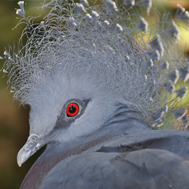 Yes. Sexual selection allows an organism to combine half of its genes with the half of another and these new combinations of genes are passed to the following generations. It is this genetic diversity that provides the opportunity for a species to change over time. Sexual selection is a very powerful drive in organisms. Peacocks, for example, produce and maintain beautiful, extravagant feathered trains to attract mates. These feathers are harmful to the individual bird’s survival and are likely to attract predators as well as interested members of the opposite sex and they slow down the male birds in fighting, fleeing and flying. Studies have shown that peahens select and mate with peacocks with the biggest tails that advertise the fitness level of their genes.
Yes. Sexual selection allows an organism to combine half of its genes with the half of another and these new combinations of genes are passed to the following generations. It is this genetic diversity that provides the opportunity for a species to change over time. Sexual selection is a very powerful drive in organisms. Peacocks, for example, produce and maintain beautiful, extravagant feathered trains to attract mates. These feathers are harmful to the individual bird’s survival and are likely to attract predators as well as interested members of the opposite sex and they slow down the male birds in fighting, fleeing and flying. Studies have shown that peahens select and mate with peacocks with the biggest tails that advertise the fitness level of their genes.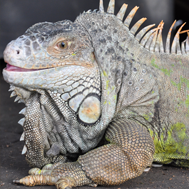 Speciation is the progress of how one species splits into two different, distinct species which no longer can interbreed with each other. Speciation occurs when a group within a species separates from other members of its species and develops its own unique characteristics. The demand of a different environment can differentiate the new species from its ancestors. It is important to remember that populations of species evolve, rather than individuals. Although it can sometimes be a slow process, speciation provides and helps to explain the vast amount of diversity we see on our planet.
Speciation is the progress of how one species splits into two different, distinct species which no longer can interbreed with each other. Speciation occurs when a group within a species separates from other members of its species and develops its own unique characteristics. The demand of a different environment can differentiate the new species from its ancestors. It is important to remember that populations of species evolve, rather than individuals. Although it can sometimes be a slow process, speciation provides and helps to explain the vast amount of diversity we see on our planet. 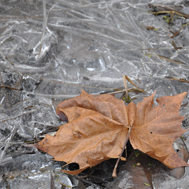 If you wanted to squeeze the 3.5 billion years of the history of life on Earth into a single minute, you would have to wait about 50 seconds for multicellular life to evolve, another four seconds for vertebrates to invade the land, and another four seconds for flowers to evolve- and only in the last 0.002 seconds would "modern" humans arise. It can take many generations to produce the changes over time that we see in plants and animals. Most, but not all, of this change takes place over thousands of years. It is sometimes hard to grasp these long time spans of change because of our own limited time on Earth.
If you wanted to squeeze the 3.5 billion years of the history of life on Earth into a single minute, you would have to wait about 50 seconds for multicellular life to evolve, another four seconds for vertebrates to invade the land, and another four seconds for flowers to evolve- and only in the last 0.002 seconds would "modern" humans arise. It can take many generations to produce the changes over time that we see in plants and animals. Most, but not all, of this change takes place over thousands of years. It is sometimes hard to grasp these long time spans of change because of our own limited time on Earth.